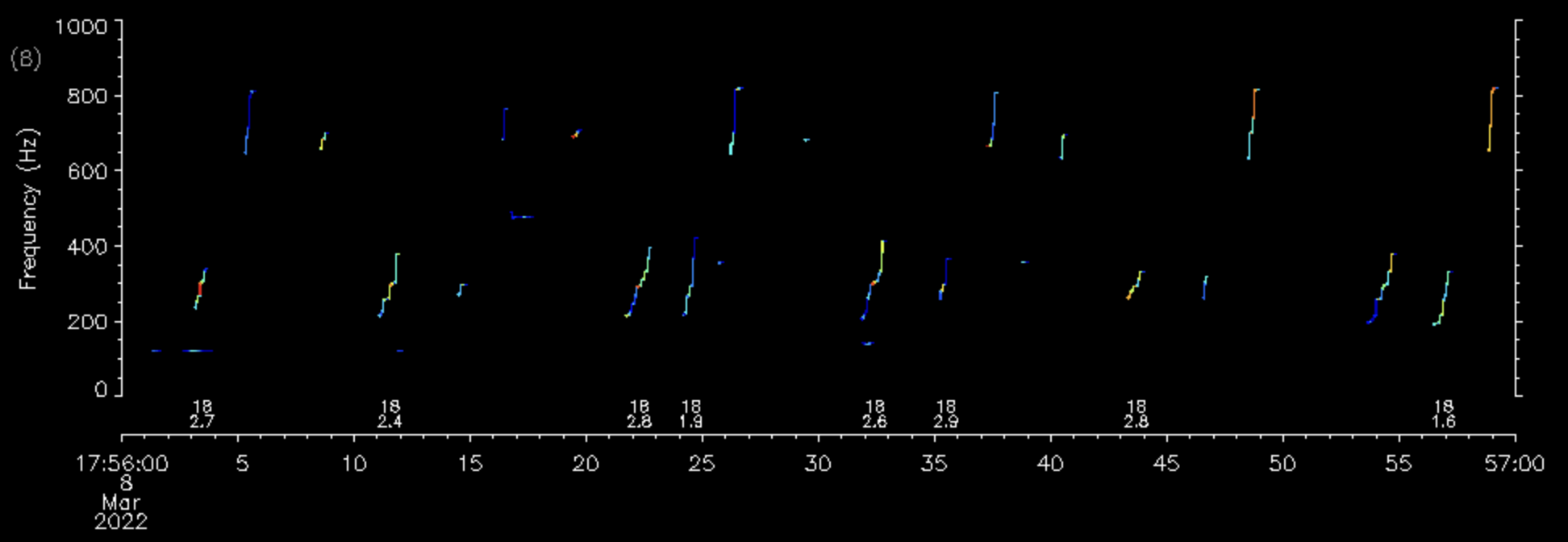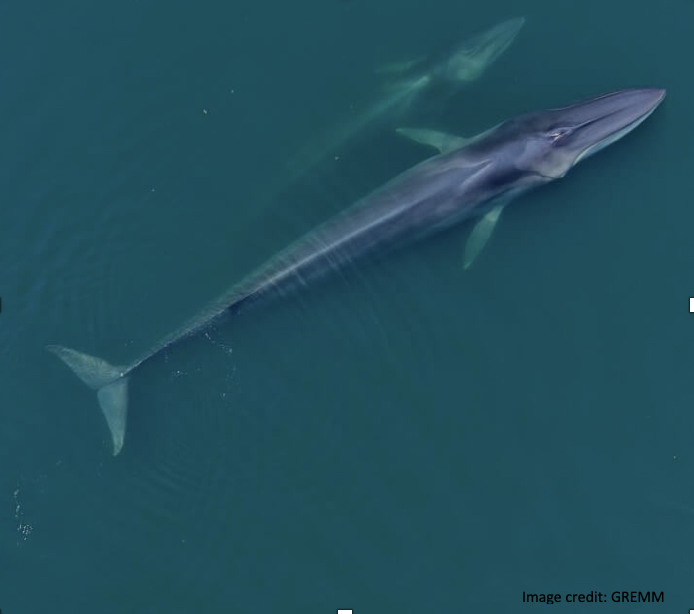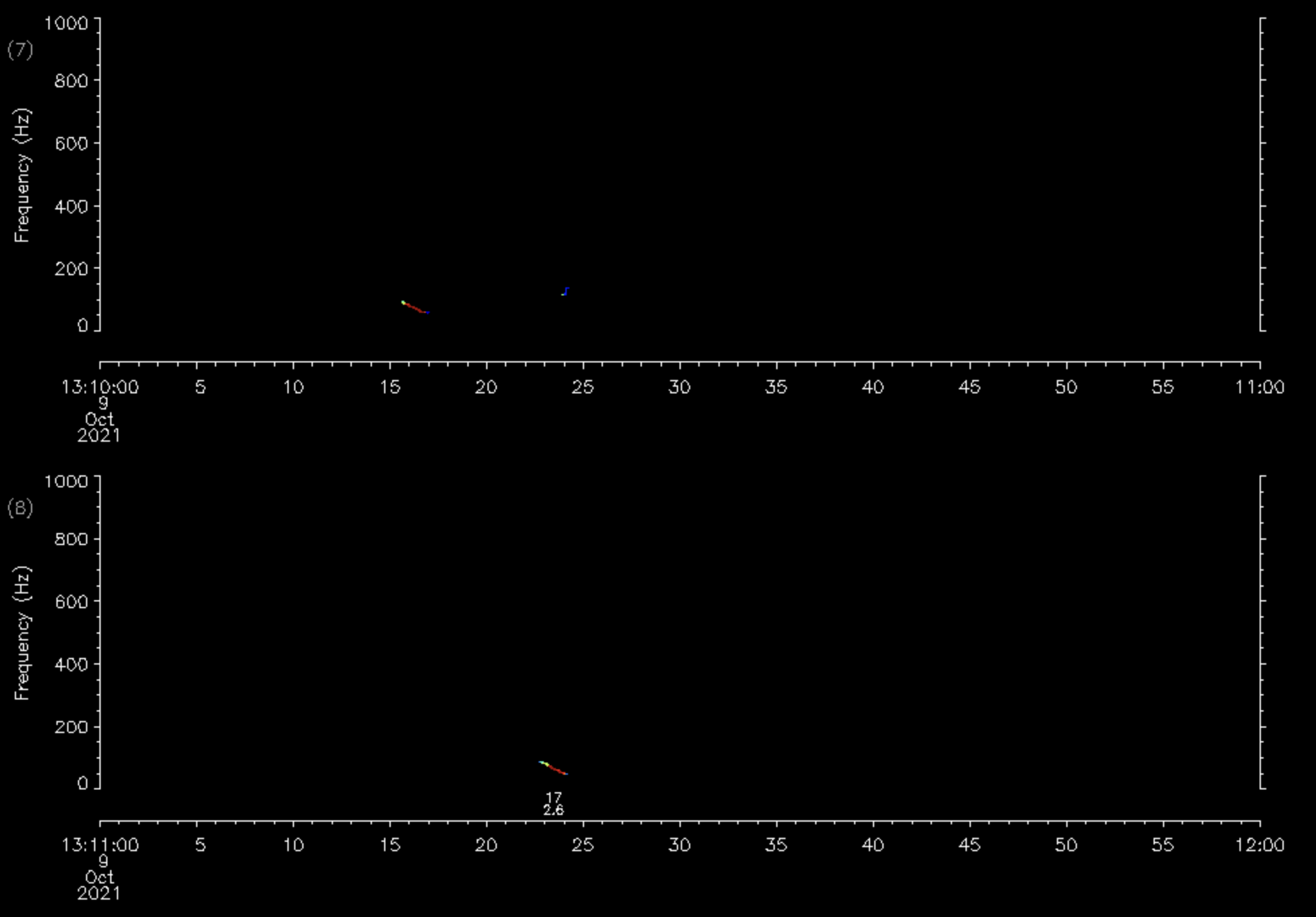Meet the Whales
North Atlantic right whale
(Eubalaena glacialis)
North Atlantic right whales are identified by sounds called upcalls at 200Hz with no consistent pattern. Right whales can be detected about 10km from the Real-time Whale Buoy.

Near Real-time data transmitted 12 January, 2022 
Archived audio spectrogram recorded 12 January, 2022 
Humpback whale
(Megaptera novaeangliae)
Humpback whales make the most variety of sounds of the whale species studied. They are most commonly identified by song patterns, but are known to produce social sounds as well. The songs are produced only by males, however both females and males can make social sounds. Humpback whales can be detected about 10km from the Real-time Whale Buoy.

Near real-time data transmitted 8 March, 2022 
Archived audio spectrogram recorded 8 March, 2022 
Fin whale
(Balaenoptera physalus)
Fin whales are identified by a 20Hz pulse train with a consistent seasonal inter-pulse interval. These whales produce sound at the lowest frequency of all the four whale species studied and have the largest detection range. Fin whales can be detected within 100km of the Real-time Whale Buoy.

Near real-time data transmitted 20 December, 2021 
Archived audio spectrogram recorded 20 December, 2022 
Sei whale
(Balaenoptera borealis)
Sei whales are identified by sounds with a downsweep shape between 30 and 100Hz. These sounds can appear as singles, doublets or triplets. Sei whales can be detected about 10km from the Real-time Whale Buoy. This species presence has been identified the least in the US Wind lease area.

Near real-time data transmitted 9 October, 2021 
Archived audio spectrogram recorded 9 October, 2021 